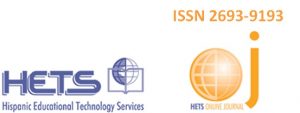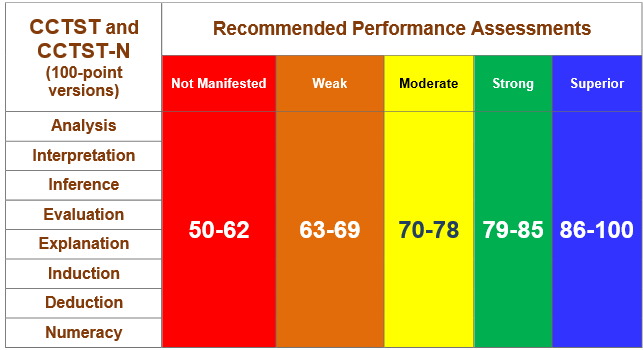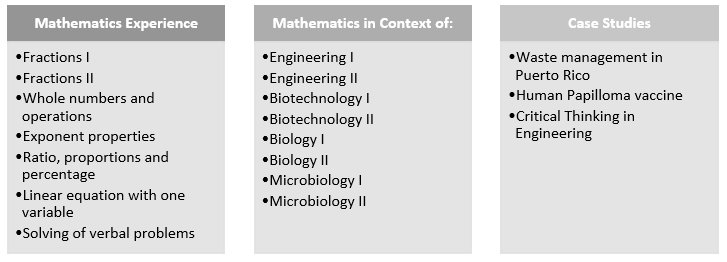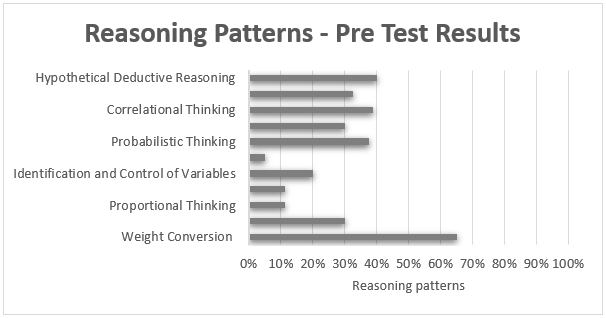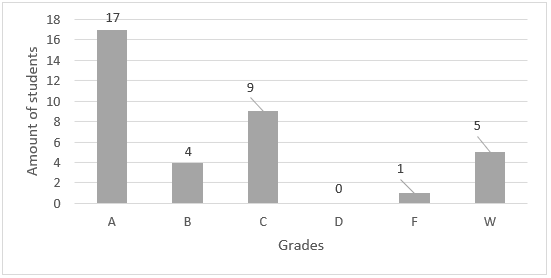Impacts pre-freshman immersion summer programs have on STEM undergraduate minority students in a Hispanic Serving Institution: An exploratory design
By: Carmen Peraza González, Frances N. Lugo-Alvarado, Marielis Rivera Ruiz (Corresponding Author)
Nilda Medina-Santiago, Saraí Torres Ruíz and Wined Ramirez-López
Universidad Ana G. Méndez-Carolina Campus (Puerto Rico)
Escuela de Ciencias y Tecnología
Abstract
The School of Science and Technology (SST) of the Universidad Ana G. Mendez- Carolina Campus implemented a Pre-Freshman Summer Immersion Program known as “BootCamp” for minority STEM undergraduate students through the U.S. Department of Education. Freshman students tend to enter university without certain skills needed to succeed during their first year. The objective of the program is to reinforce quantitative reasoning, critical thinking, and scientific reasoning competencies and help students adapt to university life through self-efficacy and coping skills. To accomplish these objectives Bootcamp was organized as a two-week intervention, focusing on basic mathematical concepts that the students found difficult during their first year of undergraduate studies. Also, the program offered critical thinking development with case studies focused on science and engineering scenarios. A descriptive-exploratory design involving a sample size of 39 students from the SST was used. The results are obtained from four standardized tests and first-semester math grades. The results show that participants in the BootCamp need to reinforce quantitative reasoning skills needed by freshmen students to succeed along the path to complete studies that lead them into careers in STEM.
Keywords: BootCamp, STEM, scientific reasoning, quantitative reasoning, self-efficacy
Introduction
Our institution draws its student body from a special population that share similar characteristics: 83% are from low income families, 77% are first generation university students, 99% are placed in basic math courses and only 66% attend class full-time (Self-Study Report, 2015). There were three factors identified that influenced retention, graduation, and persistence in our student population. The first factor identified was the combination of the high cost of tuition and being low-income, which leads students to have a full-time job and thus cannot take on full-time student responsibilities. The financial challenges encountered by low-income students can negatively impact their graduation trajectory. According to Soria et al., 2014, while obtaining a college degree is often viewed as a critical component of social mobility, students from lower/working-class backgrounds are significantly less likely to attend college, persist, and graduate regardless of their academic ability than their peers from higher income families or those who are not the first in their families to graduate from college.
The second factor is the lack of family support due to being first-generation college students. Students bring with them fears and misconceptions about college life and academic experiences, not having support from those closes can increase these fears and insecurities. Family support is a central guiding force that is essential in the development of college students. “As high school seniors start applying to college around this time of year, parents and people influential in their lives can play an important role in helping children build confidence and life skills. It is important to guide them towards choosing a college that best fits their needs first and foremost not only in an academic sense but also relative to emotional needs” (Giarnella-Porco, The Harris Poll Hard Data. Human Truths. (n.d.). The last factor identified was how well students performed on the Medición y Evaluación para la Transformación Académica (META-PR) standardized test taken before entering university. Test results indicate that students begin their undergraduate studies with low mathematical achievement. Based on this test results, 99% of the entering student in our institution is placed in an introductory math course.
The above-mentioned factors establish that our students come from an economic, social and educational disadvantaged population, which affects their academic performance, retention, persistence, and graduation. These factors affect STEM student’s success in the School of Science and Technology (SST) as evidenced by the graduation and retention rate. The SST offers three bachelor’s degrees in Biological Sciences (i.e. Biology, Biotechnology, and Microbiology) and three associate degrees in Engineering Technology (i.e. Avionics, Electronic, and Networking; accredited by ABET). Recent SST retention rate was 65.5% and graduation rate was 15%, the lowest in the institution. Thus, to improve the academic preparedness of our students, institutional efforts heralded by the Office of the Academic Vice-Chancellor have been put in place to strengthen general education curriculum and to provide our students with an environment that is proactive, supportive, networked and regularly assessed for effectiveness. Strategies to incorporate competency-based education (CBE) to improve retention, persistence, and graduation in students was implemented. CBE will help with the development of Critical thinking, Quantitative reasoning, Scientific Reasoning, Research and information literacy, Entrepreneurship and Global Awareness, competencies in students. Competencies development is important for any professional, but the ability to interpret correctly the complex numerical relationships represented in tables, charts, graphs, blueprints, or diagrams in STEM careers is vital (CCTST Guide, 2016). Another important competency for STEM students is critical thinking; early assessment of critical thinking maximizes workforce efficiency and increases the potential for learning and educational effectiveness at all levels (King et.al. 1990). According to Meyrick (2011), developing students’ reasoning skills, critical thinking skills, creativity, and innovation through integrated and connected STEM curriculum and pedagogical practices provide equity among learners from diverse backgrounds.
As part of this institutional initiative SST implemented for the first time a Pre-freshman Summer Immersion Program called BootCamp through the U.S. Department of Education’s HSI-STEM Articulation Program. BootCamp consists of activities that involve the development of critical thinking, scientific and quantitative reasoning competencies, self-efficacy and coping skills in STEM students. The program was organized as a two-week intervention, focusing on basic mathematical concepts that the students found difficult during their first year of undergraduate studies. Goonatilake & Chappa in 2010 demonstrated that math interventions occurring before students entering first-year results in a substantial improvement in areas of greatest weakness. It is also documented that participating in summer programs after high school has an important effect on students transitioning to college life that produces positive impacts on their academic performance as well as persistence rates (Castleman, Page & Schooley, 2014).
Evaluation of the competency level that entering freshman students have at the moment of starting classes was done using the formative and summative assessment methods. The Summative Assessment was represented by four standardized tests taken by the participants: Lawson’s Scientific Reasoning, California Critical Thinking Skills Test-Numeracy (CCTST-N), General Self-Efficacy (GSE), and Coping Skills Inventory (CSI). A mathematical test designed by the SST math faculty was also administered to measure the concepts that the students knew beforehand. The Formative Assessment is measured using the electronic test taken on the EducoSoft platform to develop basic mathematical concepts. Also, Biology, Biotechnology, Microbiology, and Engineering case studies were incorporated to demonstrate to students the important role that math plays in all areas of STEM programs offered by SST. For the purpose of this article GSE and Coping skills (CSI) results will not be discussed.
Methods
Design
A descriptive-exploratory scope study was carried out to identify how academic problems manifest in a real educational environment. Descriptive studies seek to define the profiles of the subject under investigation. Meaning, they only intend to measure or collect information (Hernández, et al, 201, Ary, 2010, Creswell, 2012). While, exploratory studies serve to clarify, establish priorities, and obtain information regarding the determination of carrying out complete investigations. The use of this methodology was to determine the academic level in which the entering STEM students arrived with as well as analyze their critical thinking, quantitative and scientific reasoning skills. A group of freshman STEM undergraduates chosen were subjected to a battery of standardized tests. The immersion program was developed as a two weeks program with contextual activities that were developed based on the academic programs offered by the University. This immersion process was complemented with various assessment techniques and worked on the EducoSoft platform.
Sample
Forty (40) freshman students, all formally enrolled in the SST programs, were selected from a sample of 120 students. Selection criteria were: be between the ages of 17-30, and come from low-income families. In 2016 the U.S. Census Bureau determined that low-income families in Puerto Rico are classified as earning a median household income of $19,000 or less per year. As established under the University’s Institutional Review Board (IRB), all participants completed a participation consent form. Thirty-nine (39) students were retained by the end of the first year. Demonstrated in table 1 are the demographic information and academic majors of participating students.
Table 1: Demographic information of participants
| Gender | Age / Amount | Majors | Preceding High Schools | ||||
| Female | 21 | 17_(15/39) | Biology | 15 | Public | 30 | |
| Male | 18 | 18_(21/39) | Microbiology | 3 | Private | 9 | |
| 19_(1/39) | Biotechnology | 3 | |||||
| 20_(1/39) | Aviation | 8 | |||||
| 30_(1/39) | Electronic Engineering | 5 | |||||
| Pilot | 3 | ||||||
| Networking | 2 | ||||||
The Instruments
Lawson’s Scientific Reasoning Test. This is an open-source test sponsored by PhysPort (http://www.physport.org), consisting of 24 multiple-choice items to be completed in 30 minutes. The test covers the following topics: proportional thinking, advanced proportional thinking, variable identification, control of variables, probabilistic thinking, advanced probabilistic thinking, correlational thinking, hypothetic-deductive thinking, hypothetic-deductive reasoning, conservation of weight and displaced volume. The objective is to determine the student’s capacity for scientific reasoning by measuring concrete and formal operational reasoning in scenarios where full comprehension of context is not required. As described by Lawson students scoring below 25% were classified as concrete operational reasoners, students scoring between 25% and 58% are classified as transitional reasoning, and students scoring above 58% were classified as formal operational reasoning. The test was administered in Spanish to the BootCamp freshman students.
California Critical Thinking Skills Test-Numeracy (CCTST-N). This test measures quantitative reasoning skills as well as high-risked critical thinking and decision-making ability. CCSST-N is used worldwide in interdisciplinary programs as a method for characterizing Critical Thinking terminology. This method has proven to work in evaluating a candidate’s validity and reliability. To be better understood by participants, the test was adapted using a cross-cultural method by the project personnel and was revised and authorized by Insight Assessment classifying the Program as an International Translation Partner. This instrument possesses a cultural fit, which will be used in other Spanish speaking countries. Table 2 shows the recommended performance assessments for the CCTST Overall Score
Table 2: Recommended Performance Assessments for the CCTST test.
EducoSoft Platform is a learning management system used as an instructional tool where interactive digital content and textbooks can be presented. The platform explains step-by-step mathematic equation solutions, offers tutorials and allows for homework assignments and exams to be completed at home. For this research, we limited the topics to the following: whole numbers, linear equations, operations, fractions, word problems, properties of exponents, ratios, proportions, and percentages.
Math Diagnostic Test. Developed by the Mathematics Department consists of 25 multiple-choice questions and focuses on operations with fractions and related topics, verbal problems, exponents, linear equations with one variable, ratio, percent, and proportions.
Human Subject Research Approval
This project is classified as exempt from the UAGM-CC’s IRB review (project ID 02-313-17).
Procedure, Schedule, and Duration
The Pre-Freshman Immersion Program consisted of a two-week intensive training, which prioritized development of quantitative and scientific competences as well as critical thinking. The training was scheduled from 8:30 a.m. to 4:00 p.m. with 15-minute breaks and lunch in between.
Table 3: Workshop topics offered
Results and Discussion. It is important to note that the data collected represent the Pre-test preliminary results gathered during the two weeks of the Pre-Freshman Immersion Program and basic descriptive statistics were done using the R program. The results of the pre-test were used to establish a baseline for subsequent evaluations. For this purpose, a post-test will be administered at the end of the first academic year to the students that participated. This is done to monitor student performance after the intervention using different strategies.
Lawson’s Scientific Reasoning Test pre-test results are presented in graph 1. The average score from the students that participated in the Pre-Freshman Immersion Program was 29.1%.
Reasoning patterns from the test were between 5% and 65% in the components detailed above. It is important to note that all components were below 50% except for the Weight Conversion component. Results reflected that our students are classified as transitional reasoning. This result is not in accordance with the theory of child cognitive development which states that children aged 11 years and over have formal operational reasoning ability characterized by having the ability to identify and control of variables, probabilistic thinking ability, thinking correctional ability and hypothetical-deductive reasoning (Lawson,2009).
Graph 1: Lawson’s Scientific Reasoning Test pre-test results
Table 4 presents the eight subtests covered in the CCTST-N test and their results. These take into consideration the Recommended Performance Assessment (table 2) varying from not manifested [50-62], weak [63-69], moderate [70-78], strong [79-85], and upper level [86-100]. The students ranked highest in the “weak” category, meaning the participants obtained less than 63%. The results were between an average of 62.46 and 67.85. CCTST-N test starts at a score of 50, thus BootCamp student’s baseline indicates low academic achievement. Out of eight subtests, seven were found to be in the Weak category, while the numeracy category demonstrated Not Manifested. It is important to note that subtest content is directly related to mathematical procedures.
Table 4: Descriptive Data of the CCTST-N subtests
| CCTST-N (100 points) | Baseline | CCTST-N Scale |
| Sub-test | Average | Results |
| Analysis | 65.77 | Weak |
| Interpretation | 65.36 | Weak |
| Inference | 65.38 | Weak |
| Evaluation | 64.95 | Weak |
| Explanation | 63.46 | Weak |
| Induction | 67.85 | Weak |
| Deduction | 63.92 | Weak |
| Numeracy | 62.46 | Not manifested |
The purpose of the Mathematical Diagnostic Test was to establish BootCamp student’s mathematical baseline. The average of correct answers from the 39 students was calculated to be 13.2. The average obtained from the test was 53%, indicating that the execution of the students was below the 70% minimum execution percentage stipulated by the mathematical faculty. Formative evaluation was performed using EducoSoft platform while the program activities are forming. The platform is programmed to increment in difficulty as students answer correctly the items which help monitor student performance regarding mathematical concepts as they were being exposed to the topics during the Bootcamp. Table 5 shows that the average execution of the students in mathematical topics covered by the EducoSoft platform was 51.82%.
Table 5: EducoSoft Results
| Topics | EducoSoft |
| Operations with fractions and related topics | 48.20% |
| Ratio, Percent and Proportion | 44.62% |
| Verbal Problems | 56.00% |
| Exponents | 47.74% |
| Linear Equations with one variable | 62.56% |
| Average | 51.82% |
Finally, graph 2 depicts the grades obtained by the BootCamp students in MAGS101 (Basic Mathematics). As a result, 83% of BootCamp students approved the MAGS101 course with a final grade of C or higher versus non-BootCamp participating students whose course approval was 77%. This suggests that partaking in the BootCamp basic mathematic course is beneficial for students entering MAGS101. Total students in graph 2 are 36 because 3 students were placed into MAGS110 (fundamentals of Algebra) based on College Board exam scores.
Graph 2: Grades MAGS101 (BootCamp Participants)
Conclusion
The objective of the Pre-Freshman Immersion BootCamp Program is to reinforce quantitative reasoning, scientific reasoning, and critical thinking competencies. Furthermore, the implementation goal is to provide students enrolled in STEM programs with the tools they lack to help them complete their university degree. The Pre-Freshman Immersion program fostered the development of a learning community since it is implemented in a real-time academic environment setting. Each part of the project addressed the development of the following skills: critical thinking, scientific and quantitative reasoning, information management and the use of technology.
Formative and Summative Assessments were administered, indicating low performance in critical thinking, scientific and quantitative reasoning. 83% of the students performed satisfactorily during their first semester mathematical introductory course, which suggests that the mathematical introductory course topics (fractions, exponents, word problems, whole number operations, single variable linear equations, ratios, percentages, and proportions) aligned with the BootCamp may have contributed in helping students perform better in their introductory course. Our recommendation is to continue focusing on activities aimed at improving student problem-solving skills and interpersonal relations.
Considering the results obtained, the following five recommendations are giving. The first being to assign more time to mathematics workshops. The second is to adjust existing teaching strategies and design new ones aimed at strengthening scientific reasoning and mathematic skills. While the third is to promote a dialogue with the faculty and staff to establish which strategies offered can be modified for the next Pre-Freshman Immersion Program. While the fourth recommendation is to review the curriculum to address the Quantitative Reasoning & Technology through workshops, and lastly to integrate activities overhaul for first-year courses in the Biology and Engineering Department.
This program is the initial encounter with university life where students can start their university career on the right foot. The entering freshman students come with deficiencies in mathematical, critical thinking, scientific reasoning, and quantitative reasoning competences. To help with these deficiencies the BootCamp included academic interventions such as bi-weekly workshops, integration of teaching strategies in the classroom like POGIL, PLTL, Peer Mentor/Tutor services, Faculty Advisors, and Science Specialists to help during the different implementation stages. These interventions are to better develop and prepare underrepresented low-income students to succeed in STEM careers.
Reference
Ary, D., Jacobs, L. Sorensen, C. (2010). Introduction to Research in Education. Eighth Edition Cengage Learning.USA
Anderson, S., Ball, S., Murphy, R. & Associates. (1975). Encyclopedia of educational evaluation. San Francisco:Jossey-Bass.
Babler, J., & Schwarzer, (1996). Evaluación de la autoeficacia: Adaptación española de la escala de autoeficacia general [Measuring generalized self-beliefs: A Spanish adaptation of the general self-efficacy scale]. Ansiedad y Estrés, 2(1), 1-8.
Benken, B. M., & Stevenson, H. J. (2014). STEM education: Educating teachers for a new world. Issues in Teacher Education, 23(1), 3-9.
Cano-García, F. J., Rodríguez-Franco, L., & García-Martínez, J. (2007). Adaptación española del inventario de estrategias de afrontamiento. Actas Españolas de Psiquitría, 35(1), 29-39.
Castleman, B. L., Page L. C. & Schooley, K. (2014). The forgotten summer: Does the offer of college counseling after high school summer melt among college-intending, low-income high school graduates? Journal of Policy Analysis and Management, 33(2), 320-344.
Chemers, M. M., Zurbriggen, E. L., Syed, M., Goza, B. K. and Bearman, S. (2011). The role of efficacy and identity in science career commitment among underrepresented minority students. Journal of Social Issues, 67(3), 469–491. doi: 10.1111/j.1540-4560.2011.0
Chemmers, M. M., Hu, L.T., & García, B. F. (2001). Academic self-efficacy and first year college student performance and adjustment. Journal of Educational Psychology, 93(1), 55-64.
Cooperativa de Servicios de Evaluación e Investigación. (2016). 2016-2017 Annual Evaluation Report.
California Academic Press. Insight Assessment. (2016). California Critical Thinking Skills Test: CCTST-N, CCTST, CCT-G835. User Maual and Resource Guide. San Jose, CA: California Academic Press. Retrieved from https://www.elcentrocollege.edu/aboutecc/curriculum-assessment-and-accreditation-office/quality-enhancement-plan/Documents/cctst_cctst-n_cct-g835_user_manual_216.pdf
Creswell, J. (2012). Educational Research. Four Edition. Pearson Education, Inc. USA
English, L. D. (2015). STEM Challenges and opportunities for mathematics education. In Beswick, Kim, Muir, Tracey, & Wells, Jill (Eds.) Proceedings of the 39th Conference of the International Group for the Psychology of Mathematics Education, PME, Hobart, Tas, 4-18.
Freeman, S., Eddy, S. L., McDonough, M., Smith, M. K., Okoroafor, N., Jordt, H., and Wenderoth, M. P. (2014). Active learning increases student performance in science, engineering, and mathematics. PNAS, 111(23), 8410-8415. doi.org/10.1073/pnas.1319030111
Goonatilake, R., & Chappa, E. (2010). Early intervention in college mathematics courses: A component of the STEM RRG Program funded by the US department of education, The Mathematics Enthusiast, 7(1), 63-74.
Hernández, R., Fernández, C. & Baptista, P. (2010). Metodología de la Investigación. México, D.F.: McGrawHill.
King, P. M. & Wood, P. K. & Mines, R. A. (1990). Critical Thinking Among College and Graduate Students. The Review of Higher Education 13(2), 167-186. Johns Hopkins University Press. Retrieved May 1, 2019, from Project MUSE database.
Klenowski, V. (1996, September 12-15). Connecting Assessment and Learning. Paper presented at British Education Research Association Annual Conference, Lancaster University. Retrieved from http://www.leeds.ac.uk/educol/documents/000000190.htm
Lawson, A.E. (2009). Basic inferences of scientific reasoning, argumentation, and discovery. Science Education, 336 –364. http://onlinelibrary.wiley.com/doi/10.1002/sce.20357/pdf
Lawson, A.E., Banks, D.L., Logvin, M. (2007). Self-efficacy, reasoning ability, and achievement in college biology. Journal of Research in Science Teaching, 44(5), 706-724. doi:10.1002/tea20172
Marie‐Pierre Moreau & Carole Leathwood (2006) Balancing paid work and studies: working (‐class) students in higher education, Studies in Higher Education, 31:1, 23-42, DOI: 10.1080/03075070500340135
Mental Health America. (2019). Balancing work and school. Life on campus. Retrieved from https://www.mentalhealthamerica.net/balancing-work-and-school#1
Meyrick, K. (2011). How STEM education improves student learning. Meridian K-12 School Computer Technologies Journal, 14(1) Retrieved from https://projects.ncsu.edu/meridian/summer2011/meyrick/print.html
National Academies of Sciences, Engineering, and Medicine. (2016). Barriers and Opportunities for 2-Year and 4-Year STEM Degrees: Systemic Change to Support Diverse Student Pathways. Committee on Barriers and Opportunities in Completing 2-Year and 4-Year STEM Degrees. S. Malcom and M. Feder, Editors. Board on Science Education, Division of Behavioral and Social Sciences and Education. Board on Higher Education and the Workforce, Policy and Global Affairs. Washington, DC: The National Academies Press. doi: 10.17226/21739.
Peraza, C., & González, A. (2016). Diálogo reflexivo sobre enseñanza y competencias: ¿Un asunto de transdisversalidad? Hato rey, Puerto Rico: Publicaciones puertorriqueñas
Peraza, C. (2012). A thoughtful look from the discipline to transdisciplinarity: Educo-reaserch perspective. Resumen del trabajo publicado en Revista EDUCYT, 2011, 2(2). ISNN: 2215-8227. Revista Congreso Universidad. Recuperado de http://www.congresouniversidad.cu/revista/index.php/congresouniversidad/article/view/69
Sackney, L., Walker, K., & Mitchell, C. (2005). Building capacity for learning communities: Schools that work. Revista Electrónica Iberoamericana sobre Calidad, Eficacia y Cambio en Educación, 3(1), 9-16.
Sanjuán, P., Pérez, A. M., & Bermúdez, J. (2000). Escala de autoeficacia general: Datos psicométricos de la adaptación para población española. Psicothema, 12(2), 509-513.
Soria, K. M., Weiner, B., Lu, E. C., Soria, B. K. M., Weiner, B., & Lu, E. C. (2014). Financial Decisions Among Undergraduate Students…, 44(1), 1–23.
Silver, E. & Snider, R. (2014). Using PISA to stimulate STEM teacher professional learning in the united states: The case of mathematics. Issues in Teacher Education, 23(1), 11-30.
The California Academic Press (2018). California Critical Thinking Skills and Numeracy Test (CCTST-N). Retrieved from https://www.insightassessment.com/Products/Products-Summary/Critical-Thinking-Skills-Tests/California-Critical-Thinking-Skills-Test-CCTST
The Harris Poll Hard Data. Human Truths. (n.d.). Students who feel emotionally unprepared for college more likely poor academic performance and negative college experience. Retrieve from https://theharrispoll.com/the-jed-foundation-partnership-for-drug-free-kids-and-the-jordan-porco-foundation-today-released-the-results-of-a-national-first-year-college-experience-survey-exploring-the-challe/
Tinto, V. (1999). Taking retention seriously: Rethinking the first year of college. NACADA
Journal, 19(2), 5-9. doi.org/10.12930/0271-9517-19.2.5
Tinto, V. (2003). Learning better together: The impact of learning communities on student success. Higher Education Monograph Series, 1. Retrieved from http://www.nhcuc.org/pdfs/Learning_Better_Together.pdf
Tobin, D. L. (2001). User manual for the Coping Strategies Inventory. http://www.peersupport.edu.au/wp-content/uploads/2014/08/Coping-Strategy-Indicator-Guide.pdf
Tobin, D., Holroyd, K. K., Reynolds, R., & Wigal, J. K. (1989). The hierarchical structure of the coping strategies inventory. Cognitive Therapy and Research, 13(4), 343-361. doi: 10.1007/BF01173478
U.S. Census Bureau, (2012-2016). Median Household Income by State. Retrieved from https://www.census.gov/search-results.html?stateGeo=none&q=INCOME&searchtype=web
Ethics approval and consent to participate
This research was reviewed and approved by the UAGM-C Institutional Review Board, approval #0231317
Consent for publication
All participants signed an approved consent form; all the names of people and places in our manuscripts are pseudonyms.
Competing interests
Not applicable
Acknowledgements
This work was conducted as part of the HSI-STEM Articulation Program funded by the US Department of Education HSI-STEM Articulation Program PR/AWARD NUMBER P031C1602222. Special thanks to the School of Science and Technology faculty for their valuable time.
Availability of data and materials
Data are summarized in tables in the article; raw data, such as interview transcripts and participant’s test results can be made available after the end period of the proposal. Please contact the author for data requests.
Funding
This work was conducted as part of the HSI-STEM Articulation Program funded by the US Department of Education HSI-STEM Articulation Program PR/AWARD NUMBER P031C1602222
The School of Science and Technology (SST) of the Universidad Ana G. Mendez- Carolina Campus implemented a Pre-Freshman Summer Immersion Program known as “BootCamp” for minority STEM undergraduate students through the U.S. Department of Education. Freshman students tend to enter university without certain skills needed to succeed during their first year. The objective of the program is to reinforce quantitative reasoning, critical thinking, and scientific reasoning competencies and help students adapt to university life through self-efficacy and coping skills. To accomplish these objectives Bootcamp was organized as a two-week intervention, focusing on basic mathematical concepts that the students found difficult during their first year of undergraduate studies. Also, the program offered critical thinking development with case studies focused on science and engineering scenarios. A descriptive-exploratory design involving a sample size of 39 students from the SST was used. The results are obtained from four standardized tests and first-semester math grades. The results show that participants in the BootCamp need to reinforce quantitative reasoning skills needed by freshmen students to succeed along the path to complete studies that lead them into careers in STEM.
Trackback from your site.
